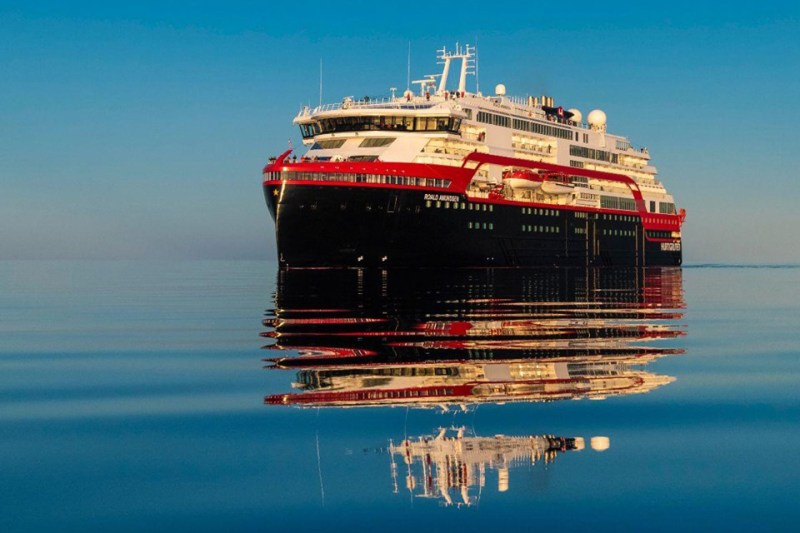
Traditional cruise ships are notoriously brutal on the environment. They’re big, heavy, and more fuel-hungry than a Saturn V rocket. Hybrid technology has come a long way in the last few decades, with everything from cars to homes now capable of running on renewable, sustainable energy. It was only a matter of time before the cruise industry got on board (pun intended). Norwegian luxury small ship cruise provider Hurtigruten made waves earlier this month with a world-first sailing of the most eco-friendly oceanliner on the planet.
The so-called “world’s greenest cruise ship” just completed its maiden crossing of the famed Northwest Passage. In a world-first, the MS Roald Amundsen traveled more than 3,000 nautical miles from the Atlantic to the Pacific Ocean entirely under hybrid propulsion. The oceanliner relies on state-of-the-art battery-hybrid technology that reduces overall fuel consumption and cuts CO2 emissions by more than 20%.
While the ship is more eco-friendly than its gas-powered counterparts in almost every way, it’s also surprisingly more luxurious. A two-story observation deck wraps around the ship’s bow, providing panoramic ocean views inside and out. Adjacent the observation deck is the Amundsen Science Center, where passengers can access educational touchscreen displays and high-tech microscopes to explore nature samples collected from their latest shore excursions. Although the relatively small ship sleeps just 500 passengers, it boasts a long list of upscale amenities included three full restaurants, a gym, saunas, a wellness center, and an infinity pool.
Every guest room is equally well-appointed. With no interior staterooms, every cabin guarantees excellent views. Many even boast private balconies and outdoor hot tubs. Inside, the cabins are spacious with sleek, Scandinavian-inspired furniture, colorways, and accents. Espresso makers, minibars, wine racks, boot warmers, and separate sitting areas are standard throughout.
The MS Roald Amundsen bears a fitting name: that of the first explorer to cross Antarctica and touch the South Pole. He’s also famous, of course, for making the first-ever end-to-end crossing of the Northwest Passage in 1906.
With its inaugural traverse of the Northwest Passage complete, the MS Roald Amundsen will travel south through the Atlantic Ocean, following the coastline of the Americas. The ship is slated for a full winter of Antarctic expedition cruises. Next summer, she’ll head back to North America to offer passengers small ship tours of Alaska. Hurtigruten will launch a sister ship, MS Fridtjof Nansen, sometime in 2020.



